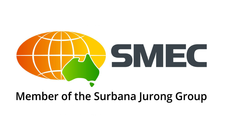Phase Two of Vlakfontein Canal Rehabilitation Project underway
| Press Release_Phase Two of Vlakfontein Canal Rehabilitation Project underway_approved | 14.29 KB | Download | |
| Completed re-lined fill section_Phase 1 | 114.01 KB | Download | |
| Completed section before bridge rehabilitation_Phase 1 | 2.53 MB | Download | |
| Existing canal before re-lining | 3.15 MB | Download | |
| Inlet to pipe bypass_Phase 1 | 147.53 KB | Download | |
| Placing of lining for canal_Phase 1 | 145.5 KB | Download |
PRESS RELEASE
Phase Two of Vlakfontein Canal Rehabilitation Project underway
05 June, 2014: Global engineering consultancy firm SMEC has been awarded the detail design and site supervision contract for phase two of the Vlakfontein Canal rehabilitation project, which is an important water supply link to coal fired power stations and petrochemical plants located in Mpumalanga.
The three-year contract was awarded to SMEC South Africa by the Department of Water Affairs (DWA) following the completion of phase one of the project in September 2013. SMEC's scope of involvement includes; project management, construction site supervision and reporting, design of canal sections, preparation of working drawings, geotechnical investigations and assessment of structures.
The Vlakfontein Canal system, constructed in the 1970s and situated between Standerton and Secunda, is a vitally important strategic component as it supplies water to two of the country’s largest energy suppliers; Eskom and Sasol. The system pumps water from Grootdraai Dam in Standerton to the Vlakfontein Canal at a rate of 5,7 m3/s.
Once the water reaches the canal, it gravitates to the Grootfontein pump station. It is then pumped to the Knoppiesfontein diversion tank, and distributed through two sets of pipelines to Bossiespruit Dam for Sasol and Trichardtsfontein Dam for Eskom.
SMEC South Africa Function Manager for Water and Environment Dolf Smook reveals that both companies require a 99,5 percent assurance level. "Sasol only has a couple of days of storage, and during the rehabilitation period, it has to rely on water pumped back from the Vaal Dam through the Vresap pipeline. Eskom has storage available in the Trichardtsfontein Dam, however, this dam is not allowed to be drawn down to below 50 percent capacity."
According to Smook, water supplied from the Vaal Dam is distributed to Sasol first. "There is currently not enough capacity to supply both Eskom and Sasol. Periodic augmentation via the Vlakfontein Canal is therefore required, and construction must be programmed to take cognisance of this. Should the Vaal Dam system fail, the canal must be put back in operation within two to three days. Construction planning must also be done to allow for this contingency,” he continues.
Smook points out that a major aspect of phase two is the design and construction of all the cut sections. "A number of execution options were investigated in detail, however, the one that proved to be most efficient and cost effective was alternating wet and dry periods in the canal by undertaking construction in the dry periods, and refilling the storage dams by pumping during wet periods.”
According to Smook, the canal cannot be out of commission for prolonged periods of time, and therefore Phase 1 of the rehabilitation of the Vlakfontein Canal over the first three years entailed the rehabilitation of the fill sections which had a higher risk of failure. "The aim of the second Phase of the project is to rehabilitate the remaining fill sections of the canal as well as all the cut sections," he continues.
At any given time, SMEC boasts a team of between four and eight engineering professionals on the Vlakfontein rehabilitation project. Smook admits that the project has faced a number of challenges to date. “Heavy rainfall in recent months has disrupted construction work. What's more, a project of this scale is also bound to encounter logistical and procurement challenges."
These challenges have been overcome thanks to the project team’s in-depth expertise and experience, combined with the strong working relationship between all parties involved in the project. "As a result, I am optimistic that the project will be completed within the provisional deadline of September 2016," Smook concludes.
Ends
Notes to the Editor
There are numerous photographs specific to this press release. Please visit http://media.ngage.co.za and click the SMEC link.
About SMEC
Australian based SMEC has more than 4 000 employees and an established network of over 60 offices worldwide. SMEC provides consultancy services for the lifecycle of a project to a broad range of sectors, which include; hydropower, transport, water, natural resources and environment, geotechnical, mining, tunnelling, urban development, renewable energy, power, government and advisory services and social infrastructure development. Following the Vela VKE merger, the SMEC Group now has over 6 000 employees and an established network of over 70 offices in 36 countries throughout Australia, Africa, Asia, the Middle East, the Pacific, North and South America.
Media Contact
Kelly Farthing
NGAGE Public Relations
Phone: (011) 867-7763
Fax: 086 512 3352
Cell: 079 367 7889
Email: kelly [at] ngage [dot] co [dot] za
Web: www.ngage.co.za

